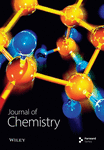Determination of Mineral Elements of Some Coarse Grains by Microwave Digestion with Inductively Coupled Plasma Atomic Emission Spectrometry
Abstract
To determinate the mineral elements contents in millet,maise,oat,buckwheat,sorghum and purple rice, microwave digestion procedure optimized was applied for digesting six coarse grains. Nineteen mineral element concentrations were determined by inductively coupled plasma atomic emission spectrometry (ICP-AES). Results displayed the limits of detection (LODs) and the limits of quantification (LOQs) range from 0.0047 to 0.1250 μg/mL and 0.0155 to 0.4125 μg/mL. The relative standard deviations (RSDs) range from 0.83% to 5.03%, which showed that this proposed method was accurate and precise to detect mineral elements in coarse grains simultaneously. Correlation coefficients (r) were calculated in the range of 0.999096-0.999989. The sufficient dada obtained described that the coarse grains selected were abundant in mineral element contents in the human body on daily diet. The success of combining the microwave digestion technology with the ICP-AES was a simple and precise method to determine many mineral elements in coarse grains simultaneously.




